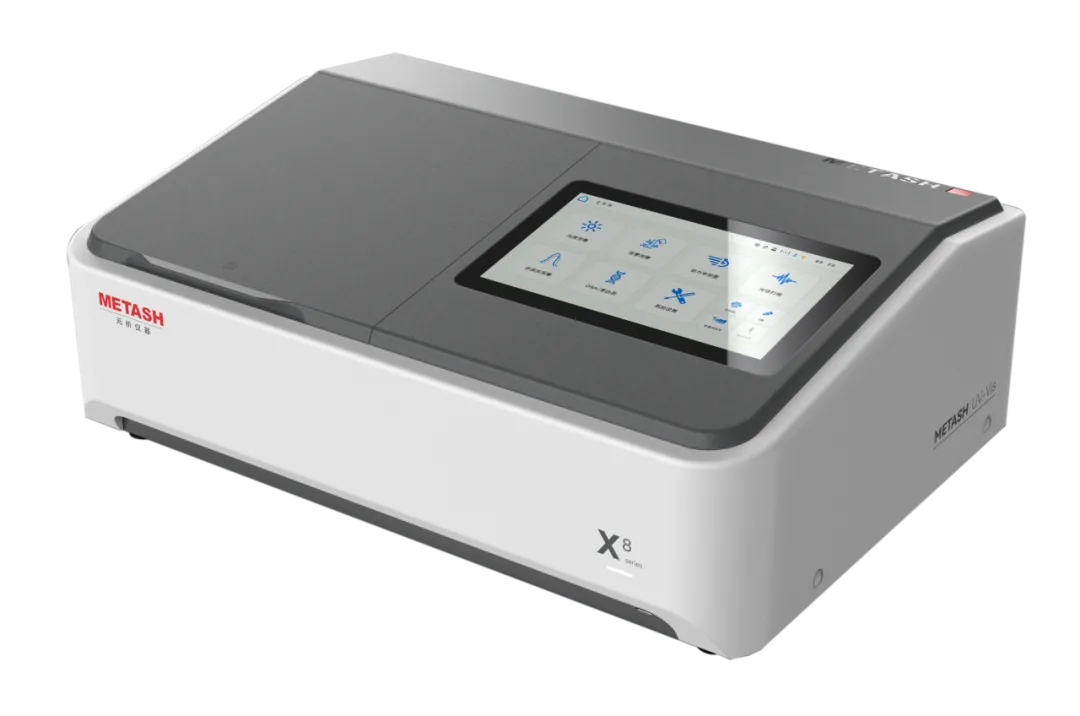- This topic is empty.
-
AuthorPosts
-
2025-08-15 at 6:11 pm #86387
Ammonia-nitrogen (NH₃-N) is a critical parameter in water quality assessment, with significant implications for both environmental and public health. In this blog post, Metash, a high performance laboratory instrument manufacturer, will share the use of touch screen UV visible spectrophotometer in detecting ammonia nitrogen in water samples, drawing on the Chinese national standard HJ 535-2009 "Determination of Ammonia-Nitrogen in Water Quality by Nessler Reagent Spectrophotometry."
Introduction
Ammonia-nitrogen exists in water primarily as free ammonia (NH₃) and ammonium ions (NH₄⁺). It originates from various sources, including domestic sewage, agricultural runoff (such as fertilizers and livestock wastewater), and industrial effluents. Elevated levels of ammonia-nitrogen can lead to eutrophication, causing algal blooms and subsequent oxygen depletion, which can result in water discoloration, foul odors, and even ecological disasters like "water blooms" or "red tides." These phenomena pose severe threats to aquatic life, particularly fish, by damaging their gill tissues and metabolic systems. Moreover, ammonia-nitrogen can interfere with drinking water treatment processes, increasing the risk of disinfection by-products and posing chronic health risks to humans through contaminated drinking water.
Instruments and Reagents
The study utilized a series of sophisticated instruments and reagents to ensure accurate and reliable results. The primary instruments included a Metash X-8D touch screen UV-Vis spectrophotometer, an analytical balance with a precision of 0.0001 g, a pipettor, and a 20 mm quartz cUVette. The reagents used were of high purity and included an ammonia-nitrogen standard stock solution (1000 mg/L), potassium sodium tartrate (AR), and Nessler reagent (HgI₂-KI-KOH).

Experimental Methods
Preparation of Standard Solutions
1. Ammonia-Nitrogen Standard Stock Solution (1000 mg/L): Ammonium chloride (GR) was dried at 100-105°C for 2 hours. A precise amount of 3.8190 g was weighed and dissolved in water, then transferred to a 1000 mL volumetric flask and diluted to the mark. This solution can be stored at 2-5°C for up to one month. Alternatively, a certified commercial ammonia-nitrogen standard solution was used in this study.
2. Ammonia-Nitrogen Standard Working Solution (10 mg/L): 5.00 mL of the standard stock solution was pipetted into a 500 mL volumetric flask and diluted to the mark. This solution was prepared freshly before use.
3. Potassium Sodium Tartrate Solution: 50.0 g of potassium sodium tartrate (AR) was dissolved in 100 mL of water, boiled to expel ammonia, cooled, and then diluted to 100 mL.
4. Nessler Reagent: 16.0 g of sodium hydroxide was dissolved in 50 mL of water and cooled to room temperature. Then, 7.0 g of potassium iodide and 10.0 g of mercuric iodide were dissolved in water and added to the sodium hydroxide solution under stirring. The final volume was adjusted to 100 mL. This reagent was stored in a polyethylene bottle with a rubber stopper or polyethylene cap and kept in the dark.
Calibration Curve Construction
A series of 50 mL volumetric flasks were prepared, each containing different volumes (0.00, 0.50, 1.00, 2.00, 4.00, 6.00, 8.00, and 10.00 mL) of the ammonia-nitrogen standard working solution, corresponding to ammonia-nitrogen contents of 0.0, 5.0, 10.0, 20.0, 40.0, 60.0, 80.0, and 100.0 μg, respectively. Each flask was filled to the mark with water. 1.0 mL of potassium sodium tartrate solution was added to each flask, followed by 1.5 mL of Nessler reagent. After shaking well, the solutions were allowed to stand for 10 minutes. The absorbance was measured at a wavelength of 420 nm using a 20 mm cUVette, with water as the reference. A calibration curve was plotted with the corrected absorbance (subtracting the blank absorbance) on the y-axis and the ammonia-nitrogen content (μg) on the x-axis.
Sample Testing
Clean water samples were directly tested, while complex water samples were pre-treated according to the standard procedures. A 50 mL water sample was taken and treated in the same manner as described above for the calibration curve. The absorbance was measured, and the ammonia-nitrogen concentration was calculated using the following formula:
ρ=V(As−Ab)×b
Where:
ρ = ammonia-nitrogen concentration (mg/L)
As = absorbance of the sample
Ab = absorbance of the blank
b = slope of the calibration curve
V = volume of the water sample (mL)
Results and Discussion
Calibration Curve
The calibration curve exhibited excellent linearity with a correlation coefficient (R²) greater than 0.999, indicating a strong linear relationship between the absorbance and ammonia-nitrogen content. This high linearity ensures accurate quantification of ammonia-nitrogen in water samples.
Detection Limit
The detection limit of the method was determined by measuring the absorbance of blank solutions 10 times and calculating the standard deviation. The detection limit was calculated as three times the standard deviation divided by the slope of the calibration curve. For a sample volume of 50 mL, the detection limit was found to be 0.001 mg/L, demonstrating the high sensitivity of the method.
Sample Analysis
The ammonia-nitrogen content in the water sample was determined through three replicate analyses, and a spike recovery experiment was conducted to assess the accuracy. The results showed an ammonia-nitrogen concentration of 3.24 mg/L in the water sample, with a spike recovery rate of 102.5%. These findings confirm the reliability and accuracy of the method.
Conclusion
The study successfully applied Nessler reagent spectrophotometry for the detection of ammonia-nitrogen in water samples, adhering to the Chinese national standard HJ 535-2009. The method demonstrated excellent linearity, a low detection limit, and high accuracy, making it a robust and reliable technique for water quality monitoring. This approach can serve as a valuable reference for laboratories and environmental monitoring stations aiming to implement standardized and efficient ammonia-nitrogen detection protocols.
As water quality continues to be a global concern, the accurate and timely detection of ammonia-nitrogen remains crucial for environmental protection and public health. The use of advanced analytical techniques, such as Nessler reagent spectrophotometry, ensures that water bodies are monitored effectively, allowing for timely interventions to mitigate pollution and preserve aquatic ecosystems.
http://www.metashcorp.com
Metash -
AuthorPosts
- You must be logged in to reply to this topic.